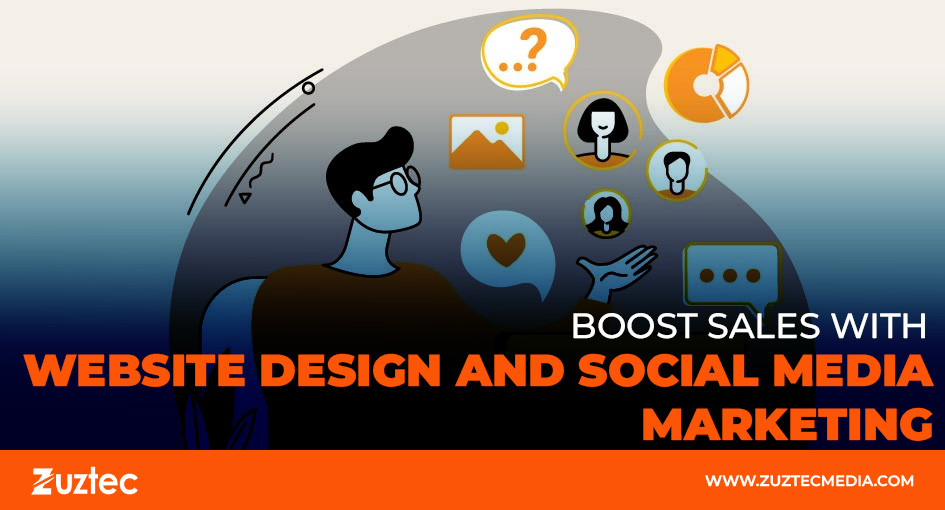
Boost Sales with Website Design and Social Media Marketing
In today’s fast-paced digital world, businesses must establish a strong online presence to drive sales and stay ahead of the competition. Two essential components of a successful digital marketing strategy are website design and social media marketing. When combined effectively, they create a powerful synergy that attracts, engages, and converts potential customers. The cornerstone of your internet business is a well-designed website. It enhances user experience, improves navigation, and ensures seamless transactions. A visually appealing and mobile-friendly website not only builds credibility but also encourages visitors to explore your products or services. However, having a great website alone is not enough. Without a solid marketing strategy, even the best-designed website may struggle to generate leads and sales.
This is where social media marketing plays a crucial role. Platforms like Facebook, Instagram, LinkedIn, and Twitter help businesses reach their target audience, increase brand awareness, and drive traffic to their websites. By leveraging engaging content, paid advertisements, and influencer partnerships, companies can attract potential customers and encourage them to visit their websites. By integrating web design and social media marketing, businesses can create a seamless online experience that nurtures leads and boosts conversions. This article explores how these two elements work together, why they are essential for sales growth, and how you can optimize them for maximum impact.
How Website Design and Social Media Marketing Boost Sales
A well-optimized website combined with strategic social media marketing creates a seamless customer journey. By enhancing user experience, increasing brand visibility, and driving targeted traffic, businesses can maximize conversions and boost overall sales effectively.
The Role of Website Design in Sales Growth
A well-structured website is more than just an online presence—it’s a sales tool. Here’s how good website design influences sales:
1. User-Friendly Navigation
A website with a clear and intuitive layout ensures that visitors can easily find the information they need. Complex or cluttered designs frustrate users, leading to higher bounce rates and lost sales opportunities.
2. Mobile Responsiveness
With over 50% of web traffic coming from mobile devices, a responsive website design ensures a seamless experience across desktops, tablets, and smartphones. A mobile-friendly site improves engagement and encourages purchases.
3. Fast Load Speed
Slow-loading websites drive visitors away. A one-second lag in page load time can lower conversions by 7%, according to research. Optimizing images, using fast hosting, and reducing unnecessary scripts can improve speed and increase sales.
4. Strong Call-to-Actions (CTAs)
Effective CTAs, such as “Buy Now,” “Sign Up,” or “Get a Free Quote,” guide users to take action. A well-placed CTA improves conversion rates and boosts sales.
How Social Media Marketing Drives Sales
Social media marketing is a powerful tool that helps businesses expand their reach, engage with customers, and drive conversions. When combined with website design and social media marketing strategies, it creates a seamless experience that attracts potential buyers and increases sales effectively.
1. Increased Brand Awareness
Social media platforms provide businesses with a global audience. Posting regularly, engaging with followers, and using branded visuals help establish a strong identity.
2. Targeted Advertising
Paid ads on platforms like Facebook and Instagram allow businesses to target specific demographics, ensuring that the right audience sees their products. This precision improves conversion rates.
3. Customer Engagement
Social media fosters two-way communication. Replying to comments, running polls, and hosting live Q&A sessions build trust and encourage more sales.
4. Influencer Marketing
Partnering with influencers expands brand reach. Recommendations from trusted influencers boost credibility and influence buying decisions.
Integrating Website Design and Social Media Marketing
To maximize sales, businesses should align their website design with their social media marketing efforts:
1. Consistent Branding
Ensure that colors, fonts, and brand messaging remain consistent across your website and social media platforms to create a professional and trustworthy image.
2. Social Media Integration on Website
- Add social media buttons for easy sharing.
- Embed Instagram and Facebook feeds on your homepage.
- Display recent Twitter updates or customer reviews from social media.
3. Landing Pages for Ads
Each social media ad should lead to a well-designed landing page with a clear CTA. A mismatch between ads and landing pages confuses users and lowers conversion rates.
4. Retargeting Strategies
Using tools like Facebook Pixel or Google Ads retargeting, businesses can show tailored ads to people who have visited their site but did not make a purchase.
Additional Tips for Maximizing Sales
1. Optimize Website for Conversions
Use heatmaps and A/B testing to determine what elements on your website drive the most conversions. Ensure checkout processes are simple and secure.
2. Leverage Video Content
Videos generate more engagement on social media and keep visitors on your website longer. Product demos and customer testimonials can boost sales significantly.
3. Utilize Chatbots and Live Chat
Adding AI-powered chatbots or live chat options to your website improves customer support and reduces purchase hesitation, leading to more conversions.
Additional Tips for Maximizing Sales with Website Design and Social Media Marketing
To achieve higher sales, businesses must refine their web design and social media marketing strategies. Optimizing user experience, leveraging engaging content, utilizing analytics, and integrating AI-driven tools can enhance customer interactions and drive conversions effectively.
To conclude, a combination of website design and social media marketing is the key to driving sales and ensuring business success. A well-designed website attracts and retains visitors, while an effective social media strategy increases visibility and engagement. Together, they create a seamless customer journey that encourages leads to convert into paying customers. By focusing on user-friendly design, mobile responsiveness, and SEO optimization, businesses can improve website performance. At the same time, leveraging social media for brand awareness, advertising, and engagement ensures that the right audience finds their way to your site. If you want to boost sales and grow your business, now is the time to integrate your website and social media strategies effectively. With the right approach, you can turn your online presence into a revenue-generating machine.

